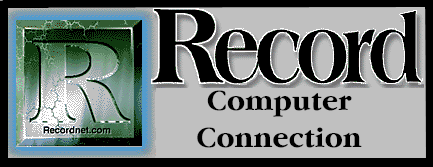

'Tis the season once again and time for the annual PC-buyers guide.
A new computer purchase is a holiday big-ticket item and often chosen
by families as the one major gift for everyone in the household. It's
important to know the minimum requirements for a decent system, lest you
be taken advantage of by marketing tactics that prey on the ignorance
of the technically challenged.
Just two weeks ago, a circular advertised a new system offered by a Stockton
store for $995. This "special buy" featured a 486DX4 system
with 8MB Ram, 640MB hard disk, 4X CD-ROM and a 14.4 modem. That's a pretty
expensive typewriter since that's about all this system can manage adequately.
OK ... maybe that's a little exaggerated, but not much. This PC is grossly
undersized for today's software, which is loaded with multimedia, graphics
and Internet connectivity.
To make matters even fuzzier, the computer pictured with the 486 advertisement
was a higher-priced, Pentium model of the same brand PC. Is this a bait
and switch? I trotted myself into the store and, as I suspected, the advertised
PC was "not in stock." The more-expensive model pictured was,
however, available. A week later, the same store offered a Pentium 75
model with similar specs for the "special buy" price of $995
AND tossed in a color printer as an added bonus!
Don't be misled, this is still an old computer. Each major component is
outdated by at least a generation or two and would need immediate upgrading
to meet the demands of today's software. Let's examine each major system
element and compare the advertised PCs with the minimum specifications
that will hopefully carry you to the millennium.
The co-processor chip is the brain of your PC and the most important element
in determining how fast your system will execute commands and complete
tasks. The Pentium chip, successor to the 486 chip, is the current standard,
although the next generation P6 chips are already in many, more-expensive
systems. Co-processing chips run at speeds measured in megahertz, from
75Mhz to 200Mhz. The higher the number, the faster the chip. A Pentium
133 should be the minimum standard for your PC processing chip.
RAM, or random-access memory, is almost as important as your co-processor,
since RAM size determines how many tasks your PC can perform simultaneously
without experiencing system slow downs and delays. RAM is your electronic
desktop or active workspace while your PC is running. Sixteen megabytes
is truly the bare minimum you should consider for your new computer. Eight
megabytes is pitifully inadequate in managing any Windows 95 applications.
You can expect minimum RAM standards to double on an annual basis, and
by next year at this time, 32MB of RAM will be commonplace.
Hard-disk size refers to the magnetic storage medium where all your programs
and documents reside. Today's applications are loaded with multimedia
and graphic enhancements that require large amounts of hard-disk storage
space. A 640MB hard disk will barely handle a full installation of Windows
95 and a few basic programs without running low on storage space. A 1.6GB
hard drive should be the minimum size, and I strongly suggest a 2 gig
size or larger.
CD-ROMs come in flavors such as 2X, 4X and 8X, and like RAM speeds, the
higher the number, the better the performance. The current standard is
an 8X CD-ROM, which should be the minimum consideration for a new system.
Lastly, the modem is the communications ingredient which enables connectivity
with other PCs and the Internet community. While a 14.4 modem speed is
adequate for transmission of simple text, it's painfully slow when it
comes to transferring graphics and multimedia content. For anyone wishing
to partake in the World Wide Web as part the PC experience, a 28.8 modem
is the minimum acceptable modem speed. The latest trend is the 33.6 modem,
quickly becoming standard.
When planning a new PC purchase, people typically anticipate all the wonderful
things a new system enables: streamlining business procedures, communicating
with friends and associates instantly, exploring new horizons in cyberspace,
creating dynamic documents and presentations, paying bills electronically,
hours of entertainment, and hundreds of other tasks never imagined possible.
Without the proper hardware to match the demands of such software opportunities,
you may find yourself disappointed once the big, red bow comes off that
Christmas package. Be careful: You get what you pay for.
Feedback? E-Mail
Return to Article Index | Return to CeePrompt's Home Page
©1996 The Stockton Record, Page Design and Layout by RRS and CeePrompt!